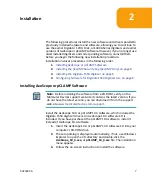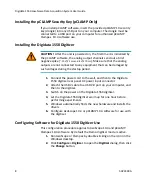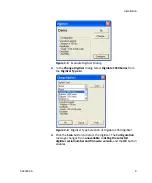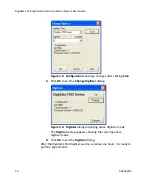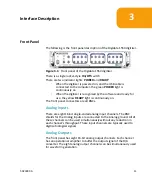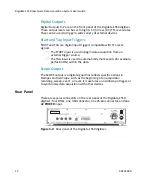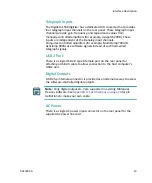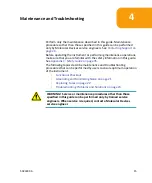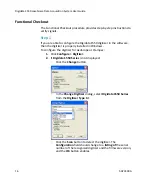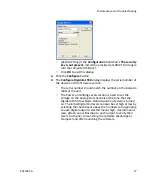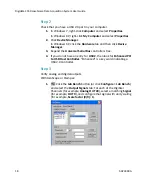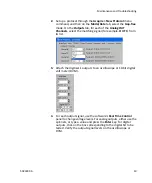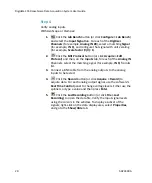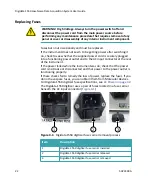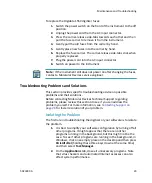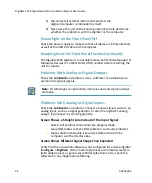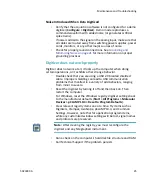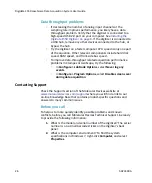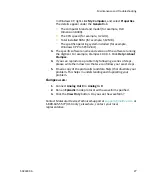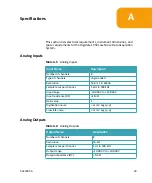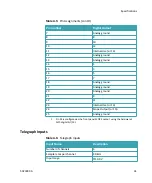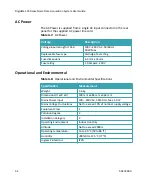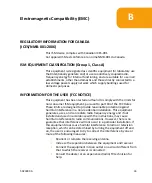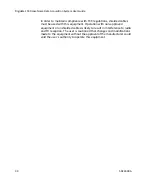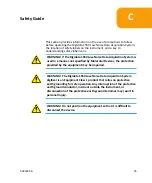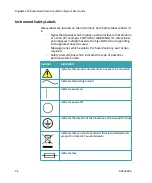
Maintenance and Troubleshooting
5023399 A
21
Grounding and Minimizing Noise
To avoid ground-loops, Molecular Devices recommends that you plug in
the Digidata 1550 digitizer to the same power strip as the amplifier. Also,
be aware that each Analog Input BNC on the Digidata 1550 digitizer is a
single-ended input (all BNC shells are connected to signal ground).
When noise in the system occurs, the first step is diagnosis. Take all
instruments out of their racks, and connect to one of them with only
ONE BNC connection. Observe if the hum (50–60 Hz noise) is eliminated.
Also observe if the hum is produced from headstage pickup by shielding
the headstage and watching the magnitude of the hum.
If the hum is eliminated at this step, connect the second BNC cable. If the
hum is now observed, there is probably a ground loop that is picking up
an alternating magnetic field. Try to eliminate the source of the
alternating magnetic field with a cheap transformer or an electric motor,
such as found in a nearby fan or refrigerator. Try to rearrange the two
BNC cables to determine if their positioning tells you anything about the
source of the alternating field. High frequency components (20–50 kHz)
might also appear if there is a ground loop. These can originate from the
switching power supply of the computer, or from a monitor, and can be
picked up in the analog signal inputs of the Digidata 1550 digitizer.
If removing the source of the alternating field is not possible, eliminate
the ground loop by constructing one of the connections between the two
instruments without a shield. Make this either with a naked unshielded
wire, or with a BNC cable that has its shielding cut at one end. Make a
break in the shielding away from the interface, near the connection on
the instrument suspected of creating the ground loop.
Additionally, the quality of the AC power should also be checked. In
particular, check for proper grounding of the outlets.
For users of Molecular Devices microelectrode amplifiers, more
information regarding noise reduction procedures can be found in the
user guides for the MultiClamp, Axopatch, and Axoclamp amplifiers.

